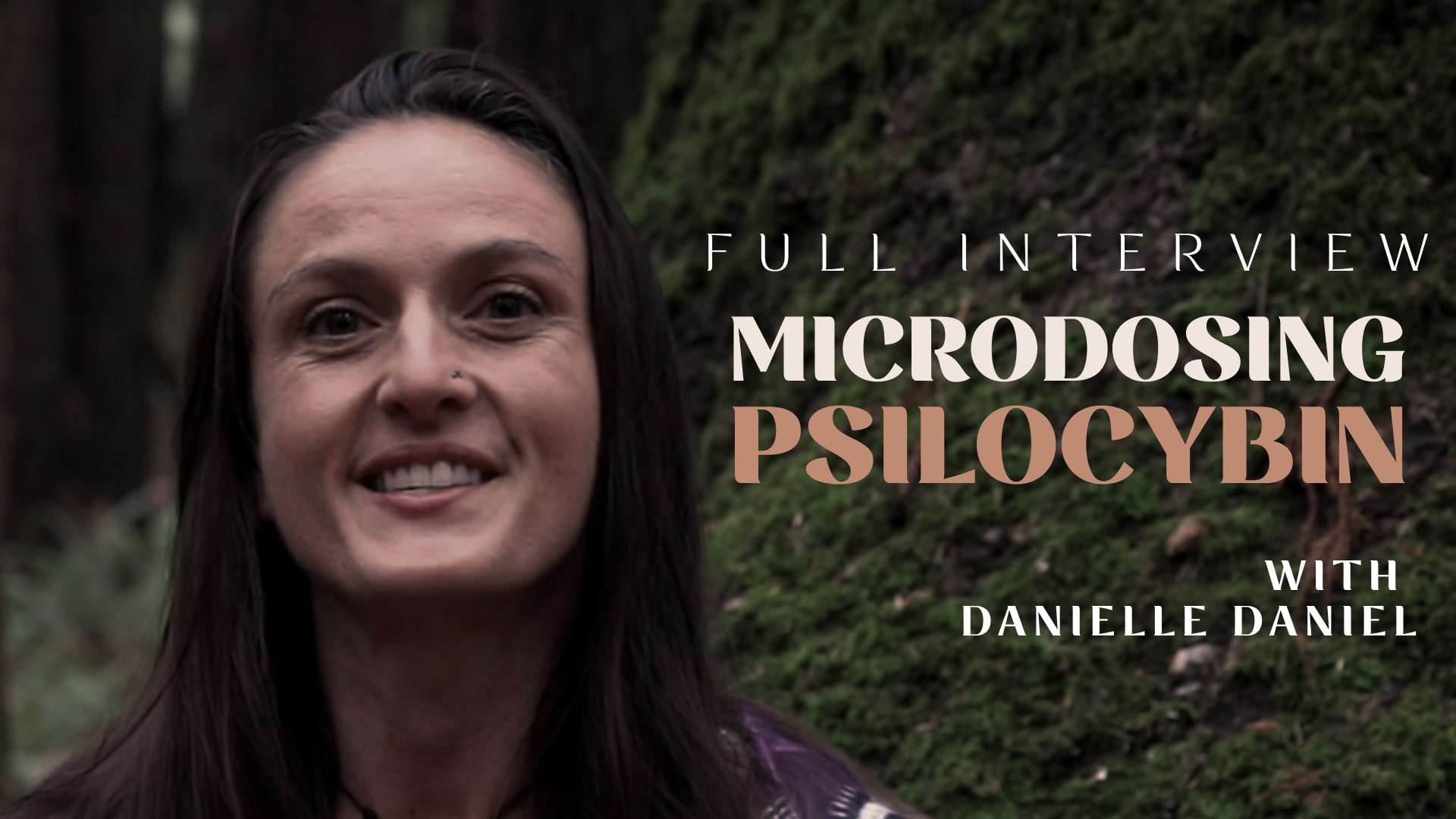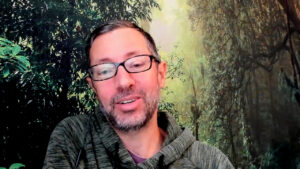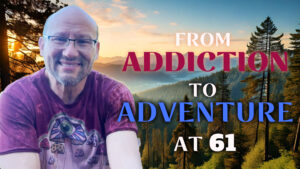Microdosing Psilocybin Mushrooms || Danielle Daniel
Advice from a Psilocybin Microdose Coach
In this interview Danielle discusses the benefits, protocols, and integration of microdosing psilocybin mushrooms, addressing topics like managing depression, anxiety, PTSD, and helping individuals get off SSRIs. Danielle also highlights the significance of intention, support, and journaling in a microdosing program, while warning about potential risks for people with certain conditions. To learn more about Danielle’s work visit her website Microdosing Humboldt
About Danielle Daniel
Danielle was born and raised in Humboldt County and is dedicated to educating the community about the healing powers of psychoactive plants and fungi, along with providing support to community members during their path of healing.
For the last 10 years she has been studying psychedelics, along with personally benefiting through therapeutic exploration. She has experienced profound personal healing and fulfilment by working with psychoactive plants and fungi.
In May of 2021 Danielle received a Master of Arts in Sociology, with a focus on psilocybin mushrooms. Her thesis focused on those who took psilocybin mushrooms long-term, and explored the experience and motivation behind working with this medicine. You can read her thesis here.
After completing her degree she spearheaded the decriminalization movement in Arcata, CA in May 2021. Danielle became the Lead Organizer of Decriminalize Nature Humboldt. On October 6th 2021 psychoactive plants and fungi were decriminalized in Arcata. Danielle stepped down from her Lead position in February 2022, in order to focus her energy on her offering as a microdosing coach. With the decriminalization of entheogens in Arcata, she is able to share her knowledge and experience about microdosing with those in the community that need guidance and support.
Watch the Full interview with Danielle
What is microdosing psilocybin mushrooms?
Danielle: Microdosing is subperceptual, so you’re nowhere near a psychedelic experience, and it’s really a personal journey, so you got to feel into it – it’s about experimentation and really taking your time to find the perfect dose for you.
For most people it’s about 0.1 to 0.3 of a gram – so that’s 100 to 300 milligrams. And its best to get a very precise scale to measure this and ground up the medicine so the caps and stems are combined together.
For your first day it’s best to do it on a day when you have nothing important to do: you don’t have to drive, you don’t have to go to work, etc. Just because if you do feel a little something, you know what that feeling is. And next time you know to go down just a little bit, because a little bit goes a really long way. So, like, if you start at 0.13 and you drop down to 0.1, that’s quite a lot.
If you feel anything, it would be like a little floaty in your body. But it’s generally a very grounding medicine, so it really helps for being present. It really helps if you’re disassociated a lot to really bring you into your body and to really feel safe in your body.
What are the benefits of microdosing psilocybin mushrooms?
Danielle: Microdosing has so many benefits for being present and in the moment. But it also helps decrease depression, decrease anxiety. It helps manage PTSD and it helps manage OCD.
It really gives us the ability to see the patterns that we’re in and make that choice to get out of those patterns. It gives us a bit of spaciousness. So, you might be triggered by something, but you have the space to see, all right, I could react in that way, or I could respond in this new way.
Microdosing makes our brains malleable. So the brain has the ability to create new pathways, which is really such a blessing, because most adults don’t usually have that opportunity. It connects neurons and creates new neurons, which are actually better than our old neurons! Those of us who have depression and anxiety, we don’t have as many neurons connecting, and microdosing psilocybin helps with treating both of these conditions!
How often should you microdose psilocybin mushrooms?
Danielle: Oftentimes people think you need to microdose every day, but if you do that you’re going to get a high tolerance really quickly. After about a week or two, you’re not going to feel the benefits anymore.
So there’s a few different protocols that I recommend. And again, this is a very personal journey, so really feeling out what feels right for you is the most important thing.
I usually start people on the Stamitz protocol, which is four days in a row of microdosing with a three day break. But for some people, that third day off is a really hard day where you can be feeling extra depressed or extra anxious. And if that happens to you, try switching to every other day, and that can be more balancing. And this also prevents tolerance.
For other people playing around with two days on and one day off can be more beneficial. I’ve seen that be very helpful for those wanting to get off of SSRIs.
How can I use microdosing to get off SSRIs?
Danielle: When you’re wanting to get off of SSRIs with microdosing, the first couple of weeks, just micro dose and feel into it.
After that, hopefully, you can work with your doctor – I always recommend communicating with your doctor. The more people that know what’s going on, the more support you will have. But I suggest tapering down a little bit each week and really feeling where you’re at. Don’t go too fast. Healing takes time and that’s what microdosing psilocybin is all about. It’s all about being patient and taking the time to really give yourself what you need.
What is Seratonin Syndrome?
Danielle: Seratonin Syndrome is too much going through your serotonin receptors. So in the worst case scenario, that could cause death, but that’s more with Ayahuasca. So you got to be really careful with Ayahuasca. But if you’re having symptoms of Serotonin Syndrome, it usually happens about 24 hours later. You might be shaky, have a fast heart rate, diarrhea, and you might be feeling very confused.
If you do get Seratonin Syndrome, it’s usually pretty mild and you can just stop microdosing and it will go away. But again, I think with psilocybin mushrooms, you will be fine. With a microdose, it’s more with substances like ayahuasca that you need to be worried. So, probably don’t microdose with Ayahuasca.
What can you stack while microdosing Psilocybin mushrooms?
Danielle: I add lion’s main because Lion’s Mane is very good for cognition and helpful to decrease depression and anxiety – I recommend people just take more Lion’s Mane because it’s such a great medicine.
I personally don’t add Niacin because it causes flushing for some people and I don’t want that to make people not want to do it. Flushing means that your skin can get red and blotchy.
And sometimes you need more than one micro dose in a day. So if it’s an extra stressful day, you might need a micro dose in the morning and then you might need another one in the afternoon. With the Niacin, that can create flushing. But the reason many people add Niacin is because microdosing psilocybin mushrooms can cause vasoconstriction so that can create a headache and Niacin will prevent that from happening. But there are other things you can do to help with vasoconstriction such as taking magnesium, which can be helpful. L thianine is also helpful – So there are other alternatives besides niacin that I prefer.
How do you integrate after microdosing psilocybin mushrooms?
Danielle: Integration is SO important when it comes to microdosing Psilocybin – and that’s what I offer. Having someone to really hold space for you, someone who really understands and someone who doesn’t have judgment, to be there to hear about your experience an be incredibly powerful!
Oftentimes with my clients, they have realizations just by talking about their experience. I also recommend trying to journal as much as possible because microdosing is definitely going to bring up joy, just childlike fascination, noticing the previously unnoticeable, but it’s also going to bring up really big things – it’s going to bring up things that are uncomfortable, perhaps uncomfortable memories and uncomfortable strong emotions.
During those uncomfortable times it can be very helpful to journal about it. Oftentimes we push these feelings away because we don’t have the tools or we don’t want to deal with it. And that doesn’t work. So when you’re microdosing, you have that support to be able to navigate through these experiences.
For example, let’s just talk about anger.
So when you’re journaling about it. How is this anger feeling in my body? All right, I’m feeling this burning in my chest. Do I remember when it happened today? It happened around noon. Did someone say something to trigger it? Yes, I felt like I had to be on the defense or no, it just happened. hrough journaling as well, things might come up like, HM, when I was twelve, I remember this thing my mom said where I had to be on the defense and it made me really angry.
So you could get realizations through the journaling, but the most important thing is just going into it exploring and just giving these emotions and these memories the space to really be felt, to really be heard, and to get to know them. What purpose are these emotions and memories serving? Why did they come into our lives?
How can microdosing psilocybin mushrooms help with fear and anxiety?
Danielle: I’ve been working with macro doses of psychedelic medicines for a long time. But a big thing that I was never able to overcome was fear and anxiety.
When I started microdosing, I didn’t have fear and anxiety anymore. And I didn’t even realize I didn’t have the anxiety anymore until I stopped microdosing a month later. When I stopped microdosing, I had an anxiety attack, and I was like, Whoa, this really works.
The anxiety was so severe for me that sometimes I couldn’t even leave my house. So microdosing has significantly and positively affected my life in being able to not have crippling fear. And it’s still there. I mean, that’s the thing with microdosing is that it helps us be more aware of these cycles, especially from childhood traumas. These cycles are still going to be there, but for the most part, it’s manageable. It’s not going to be negatively influencing your life anymore.
What does a microdosing program look like?
Danielle: So, our first session is really about intention – Intention is so important with microdosing. Why are you doing this? Why are you showing up? What is the big thing that you’re working on? So, sometimes it takes a while to really pinpoint what is my intention. And that is the important thing of the first session to really get that foundation of what the focus is. And the first session also is about explaining what microdosing is – so it’s very clear and just understood.
After our first session, we meet every other week to talk about the experience. And I’m absolutely always available before that, because having that support is so important in order to go deep.
I start everyone on the golden teacher (mushroom) because the Golden Teacher is such a friendly, mellow, deep mushroom. And in a lot of people, it’s a perfect match. But for some people, it makes them really sleepy, and they need a mushroom that’s a little bit more energizing. So it takes time to really find what is the perfect mushroom.
So far, I’ve really found that the melmacs are really good for energizing and also the albinos have been really good for people who have insomnia. So it really is just about experimenting and seeing what mushroom is best for you.
Every other session, we’re talking about your experience, and so much comes up. And my program is an eight week program. Tthe reason it’s eight weeks is because this is a really good amount of time to know if this is the medicine for you. It’s not for everyone. Also it’s a good amount of time to know all the tools of the importance of journaling, the importance of being in nature and just understanding what this medicine is all about, how it isn’t always joyous, how it does bring things to the surface, how it does amplify your environment, and your inner world and outer world.
There’s five sessions all together, and our last session is really about what do you want to do moving forward? Do you want to continue? Did you get your intention, or are we still working on it? And then there’s the choice of more independence, where I’m still there and I’m still of support, but not the every other week.
Can microdosing psilocybin mushrooms lead to ‘bad trips’?
Danielle: It’s all about perspective – I mean, it does amplify what’s going on. So if you’re going through a really difficult time, it can really make it a little too much. And it’s absolutely okay to stop for a while and really check in with yourself of what feels good and what doesn’t feel good.
If it’s not feeling good, listen to that. And you can always go back to microdosing when things settle down.
Has decriminalization changed your city?
Danielle: Absolutely, just by decriminalizing, it allows people the safety to be able to ask questions about, what are these medicines, how could I safely access these medicines?
It is tricky because you can’t actually sell. But being able to be in situations with someone who is selling their time (like with what I do) and gifting the medicine is a solution there.
I never thought I was going to be doing this at all. I had been microdosing for a couple of years before decriminalization. I was helping friends and family and I was just in such awe of how it was helping people get off of SSRIs and how it was really increasing well being.
After decriminalization, whenever I get a new batch of mushrooms, I test a gram, because every batch can have a little bit difference in potency. And on that journey, I saw so clearly how the community really needed my support and really that it was time for me to open up just on a bigger level and to offer this to the community.
Who are people that should NOT be microdosing psilocybin?
Danielle: If you have a personal history of schizophrenia, it’s not the best idea to microdose. There has been a study out that it could potentially help, but if you’re anything over a microdose, it could really make things worse. And I would say, just it could do more harm than healing.
With Bipolar disorder, it helps with when you’re in a depressed state. It doesn’t do anything for the manic state. It really helps with when they’re in a depressive state just to level them out. But its NOT safe to mix with lithium – here has been cases of people getting seizures while on lithium.
Also, sidenote, if you’re a colorblind male, it could cause tracers. But if you’re a colorblind female, it makes no difference 🙂



